Hypolepis sp. Younger portions of a branching rhizome may become isolated by decay of the older portions so that each becomes a new plant.
Please select root levels for the menu
Ferns have various methods of reproducing vegetatively without the use of spores or sperm and eggs.
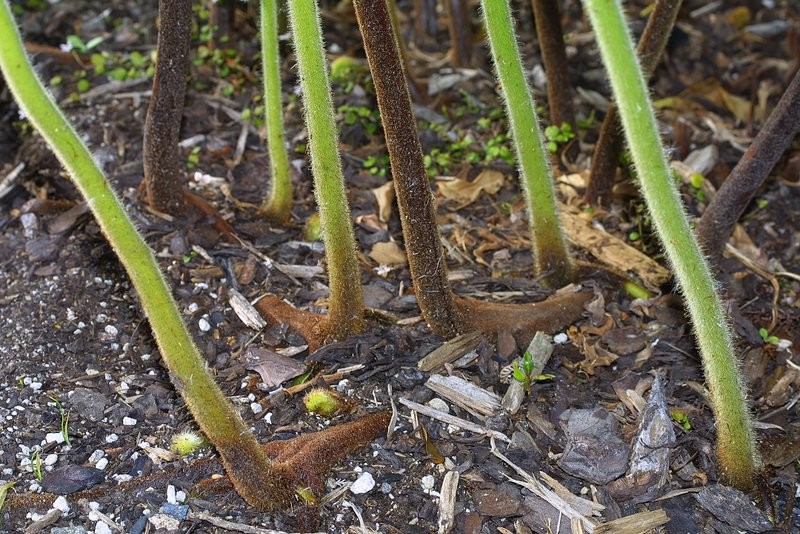
Hypolepis sp. Younger portions of a branching rhizome may become isolated by decay of the older portions so that each becomes a new plant.
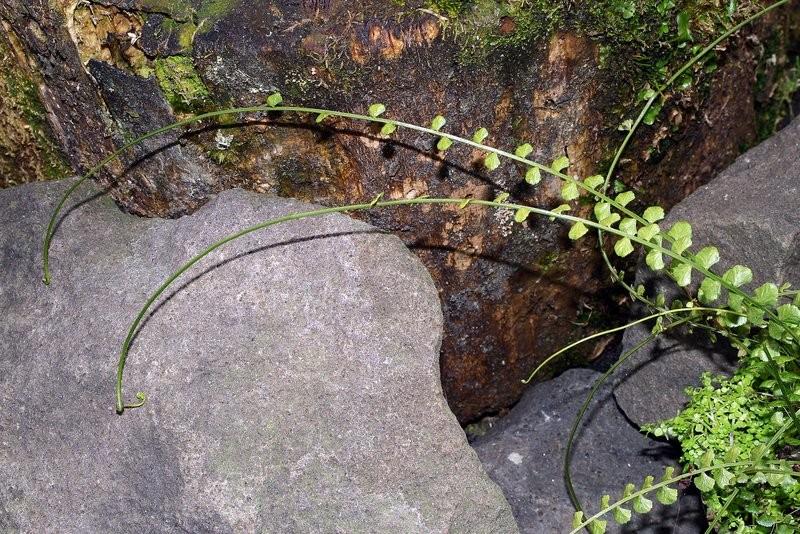
Asplenium flabellifolium, necklace fern, walking fern - The midrib (rachis) of the frond extends beyond the uppermost leaflets and elongates; when it touches the ground it roots and gives rise to new plants.
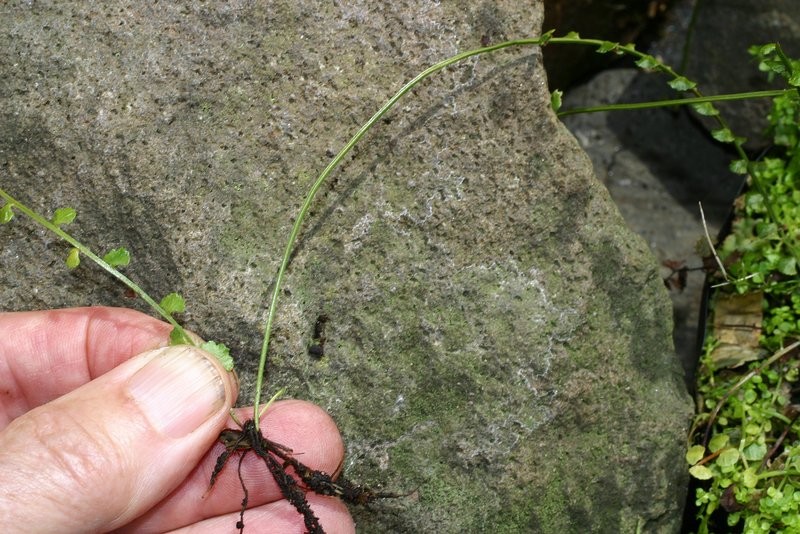
Asplenium flabellifolium - The tip of the extended rachis of the parent frond (right) has touched the soil and formed a new plant with roots and frond.
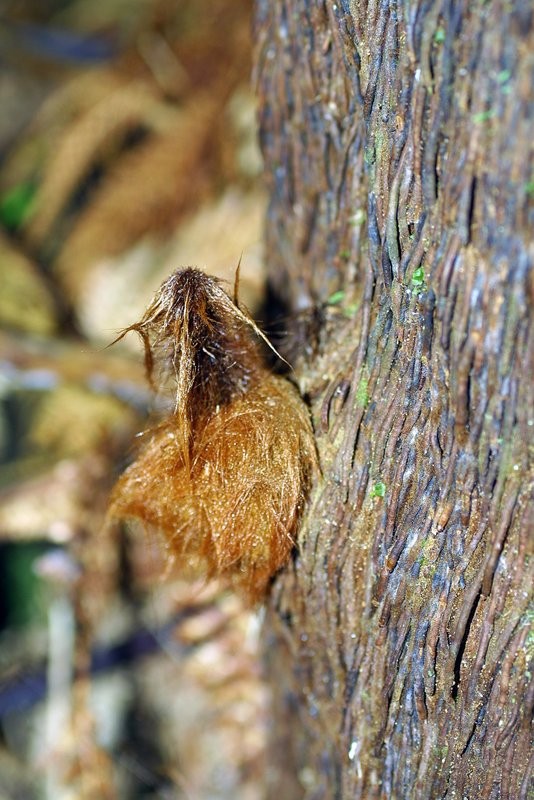
Dicksonia squarrosa, wheki, rough tree fern - Large buds often form on the trunk that remain inactive while the plant is growing and healthy.
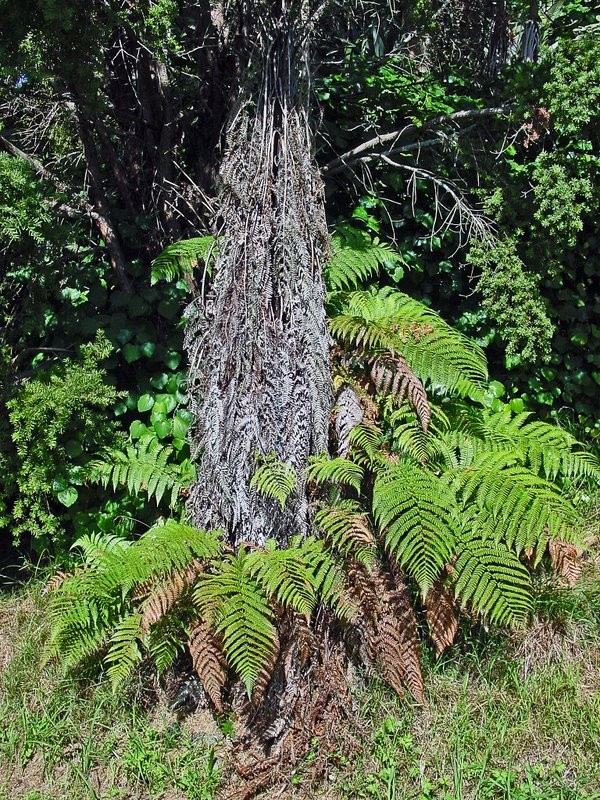
Dicksonia squarrosa - If the original plant dies the buds on the trunk or on underground stolons will enlarge and give rise to new plants.
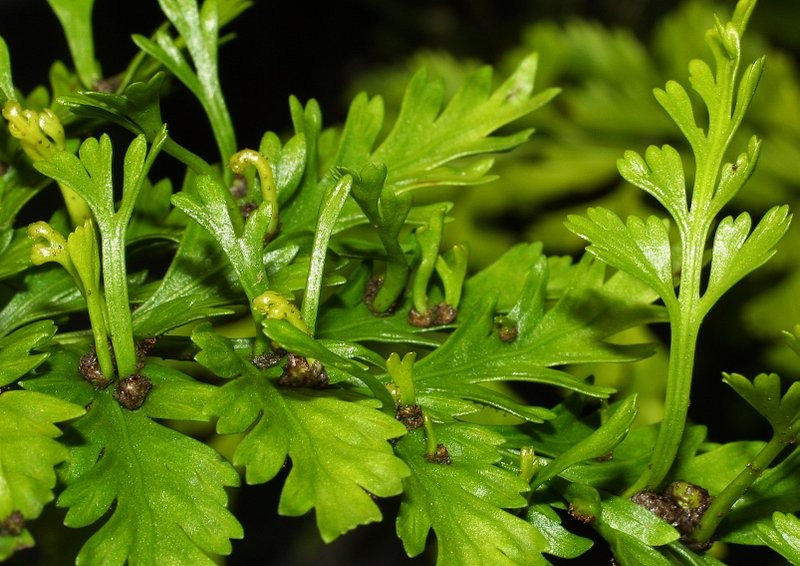
Asplenium bulbiferum, manamana, mouki, hen and chicken fern. Many spleenworts form 'bulbils' (buds) on their fronds.
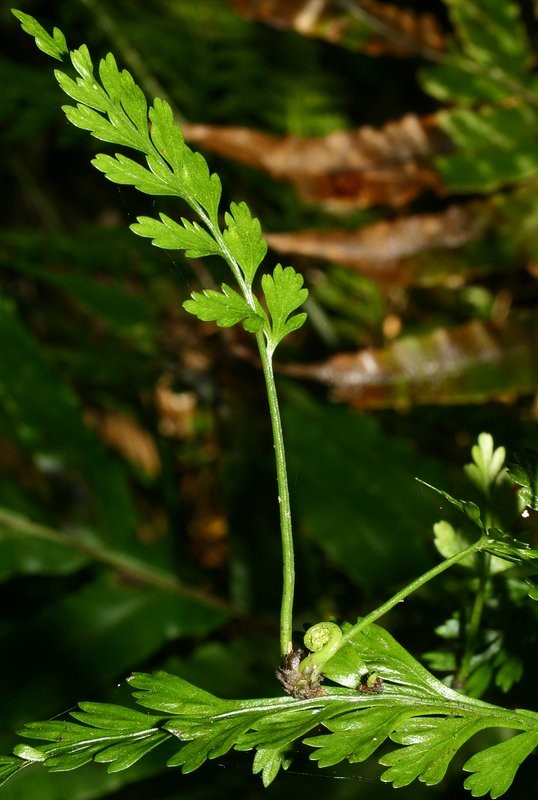
Asplenium bullbiferum - A bulbil has a short stem bearing several small fronds. When it touches the soil, it forms a new plant with roots and additional fronds.